Culture and Self: Exploring Global Perspectives
written by art historian & curator
The intricate relationship between culture and self has a profound significance in our increasingly interconnected world. The concept of self vs. others, deeply rooted in individual identity, is inextricably intertwined with the diverse cultures that influence our lives. Culture, a complex web of beliefs, customs, languages, and traditions, provides the lens through which we perceive ourselves and others. It is the mirror that reflects our unique identities while also revealing the common threads that connect us on a global scale.
Videos exploring ‘identity’:
The exploration of culture and self from a global perspective is a captivating journey into the rich tapestry of human existence. It transcends geographic boundaries, inviting us to delve into the complexities of identity formation, hybridity, and the interplay of tradition and modernity. Artists, thinkers, and individuals worldwide have grappled with these themes, creating a vibrant palette of expressions that traverse continents and bridge civilizations.
Through art, literature, music, and personal narratives, we encounter stories of self-discovery amidst the backdrop of diverse cultural landscapes. These narratives illuminate the challenges and triumphs of individuals navigating the dynamic intersection of their identities and the global cultural mosaic. They inspire us to question, reflect, and appreciate the beauty of our shared humanity while respecting the uniqueness of each cultural facet.
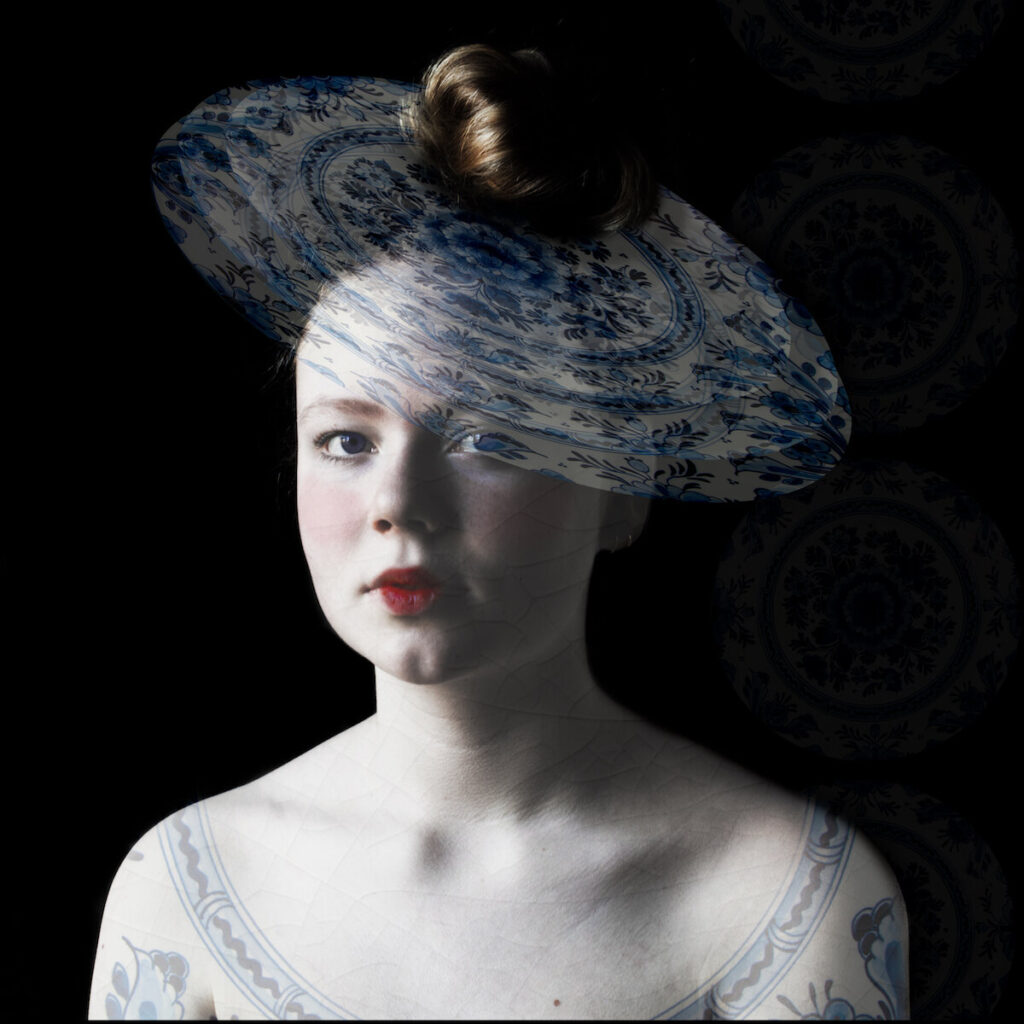
We will journey through various artworks and personalities that shed light on the captivating interplay of culture and self, offering profound insights into the human condition. Art has always been a powerful medium for exploring and expressing cultural identities, cross-cultural interactions, and individual experiences in a globalized world.
A Triptych of Cultural Self-Exploration
Frida Kahlo, the renowned Mexican artist, embarked on a deeply personal and globally resonant journey of self-exploration through her iconic self-portraits. Her works transcended borders and became iconic not only for Latin-American art but also for all women fighting for recognition.
”Self-Portrait with Cropped Hair” (1940) by Frida Kahlo is a powerful expression of defiance and self-identity. In this striking artwork, Kahlo portrays herself with shorn hair, wearing a man’s suit, and holding a pair of scissors. Her direct gaze challenges traditional gender roles, making a bold statement about personal autonomy. This self-portrait is a reflection of Kahlo’s resilience and her rejection of societal expectations. It serves as a testament to her strength and determination in the face of adversity, as she grappled with physical pain and cultural norms. Kahlo’s unapologetic representation in this painting speaks to the universal theme of self-discovery and the intricate relationship between individual identity and societal constructs.

”Self-Portrait as a Tehuana (Diego on My Mind)” (1943) is another captivating exploration of Kahlo’s identity and cultural heritage, as her exploration of the Mexican and indigenous roots takes center stage here. In this artwork, Kahlo dons the traditional Tehuana dress from Oaxaca, an homage to her mixed ancestral heritage. She gazes at the viewer with a mixture of vulnerability and strength, her features framed by vibrant, intricate textiles. The Tehuana costume becomes a symbol of pride, connecting her deeply to her cultural heritage while simultaneously expressing her individuality. This self-portrait speaks about the enduring influence of culture on one’s sense of self and highlights Kahlo’s ability to merge personal and cultural identities in her art.
”The Two Fridas” (1939) by Frida Kahlo is a profound representation of duality and identity. In this iconic painting, Kahlo presents two versions of herself seated against a stormy sky backdrop, their hands clasping each other’s. One Frida wears European attire while the other dons traditional Mexican clothing. The two Fridas are connected by arteries that merge into a single heart, a powerful symbol of love transcending cultural and physical boundaries. This masterpiece reflects Kahlo’s struggle with her Mexican and European heritage, highlighting the complexities of identity. It serves as a universal reminder that within each individual, a multitude of identities and emotions coexist, influenced by culture, history, and personal experiences. Ultimately, the artwork reflects the universal theme of love transcending cultural boundaries.
These three artworks not only encapsulate Frida Kahlo’s journey but also serve as poignant reflections of the broader human experience. They compel us to contemplate the intricate interplay between culture and self and how our identities are shaped by the cultural scenery that surrounds us.
Yayoi Kusama, a universal symbol
Yayoi Kusama, the enigmatic Japanese artist, has become a global icon in the world of contemporary art. Known for her avant-garde and immersive installations, Kusama’s work transcends cultural boundaries, captivating audiences worldwide. Her art, characterized by vibrant colours, endless polka dots, and a deep exploration of mental health, invites viewers to step into her unique universe. Kusama’s impact extends beyond art, offering profound insights into universal themes of identity, unity, and the human experience.
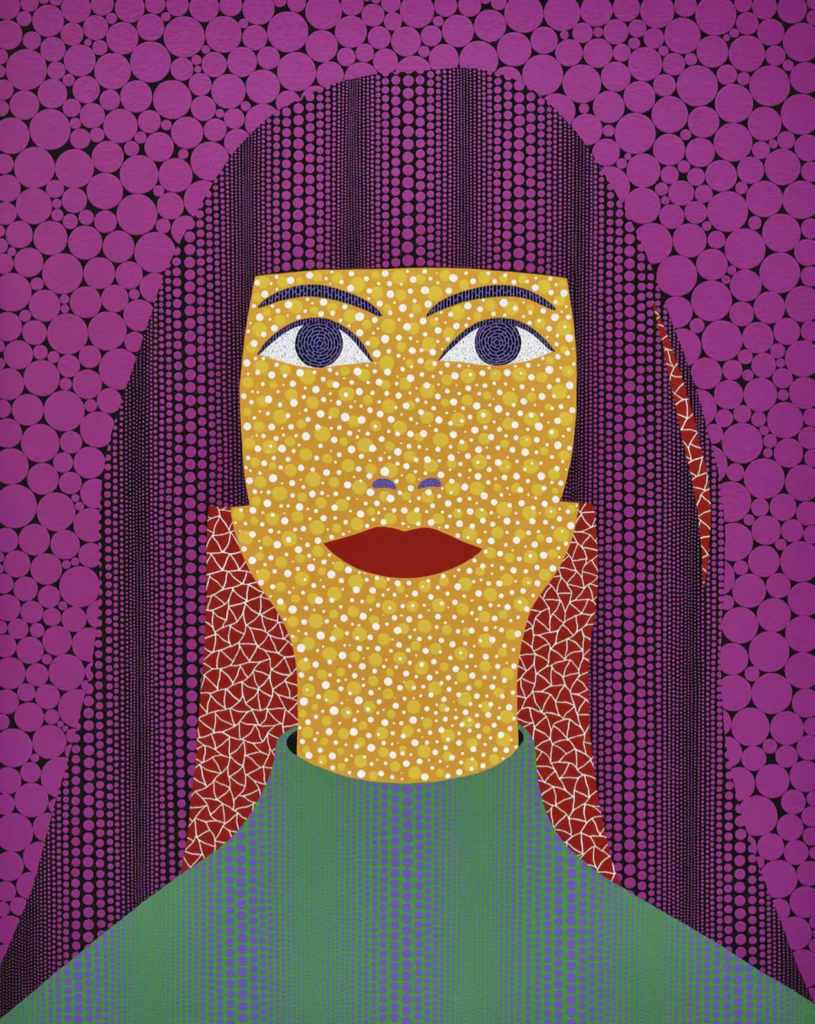
Screening through her creations, Kusama’s self-portraits incorporate unique elements that reveal her cultural background. At the same time, they offer a captivating lens through which to explore the concept of art reflecting global perspectives. Kusama’s self-portraits often feature her iconic polka dots, which are both a personal motif and a symbol of the infinite. These dots, like stars in the night sky, evoke a sense of universality, inviting viewers to contemplate the vastness of the cosmos and their place within it. In this way, Kusama’s self-portraits become a reflection of the global perspective – a reminder that we are all interconnected in the grand tapestry of existence.
Moreover, Kusama’s art is deeply rooted in her personal struggles with mental health, particularly obsessive-compulsive disorder. Her self-portraits, characterized by repetitive patterns and intricate details, convey the intensity of her inner world. In doing so, they shed light on the universal theme of mental health, transcending cultural boundaries. Mental health is a global concern, and Kusama’s openness about her struggles helps reduce stigma and fosters understanding on a global scale.
Kusama’s status as a global art sensation is also evident in her exhibitions. Her “Infinity Mirror Rooms” have toured the world, drawing diverse crowds from different cultural backgrounds. These immersive experiences invite viewers to lose themselves in a world of infinite reflections, emphasizing the shared human desire for transcendence and unity. In this sense, Kusama’s art serves as a bridge, connecting people from various corners of the globe through a shared appreciation for the sublime and the introspective.
Through her use of universal symbols, exploration of mental health, and the worldwide appeal of her exhibitions, Kusama’s art reaches across borders, offering profound insights into the interconnectedness of humanity and the shared experiences that unite us all.
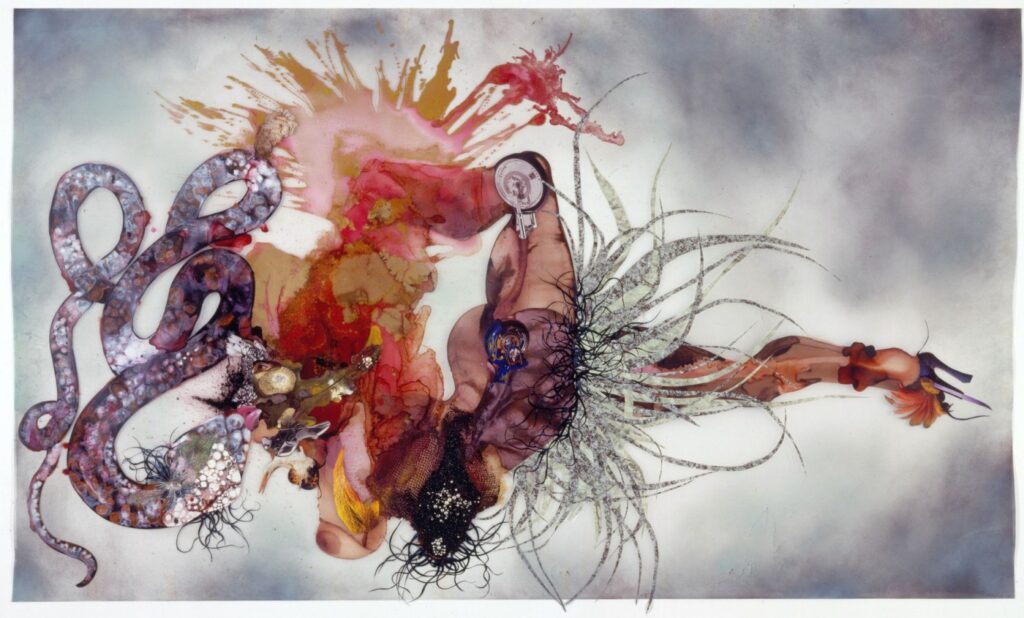
”Afro Margin” by Wangechi Mutu
“Afro Margin” by Wangechi Mutu is a thought-provoking artwork that beckons viewers to contemplate themes of identity, femininity, and cultural heritage through a global lens. Mutu, a Kenyan-American artist, is known for her intricate collage works, often incorporating elements of African and Western art. In “Afro Margin,” Mutu skillfully combines traditional African aesthetics with contemporary elements to create a captivating visual narrative. Through this piece, she raises questions about the intersection of diverse cultural experiences, inviting viewers to explore their own identities in the context of our increasingly interconnected world. Mutu’s art encourages a dialogue about cultural diversity and its impact on individual and collective self-perceptions.
The World of Banksy
Banksy, a pseudonymous street artist and political activist, has gained international recognition for his thought-provoking and often controversial artworks. His pieces often touch upon global issues such as politics, consumerism, and social justice.
”The Flower Thrower” is one international symbol that resonates with many audiences across the globe. This artwork created in 2003 depicts a man in rioter pose, but instead of a Molotov cocktail, he’s throwing a bunch of flowers. It’s a powerful statement against violence and war. The image resonates with a global audience, as it speaks to the universal desire for peace and the rejection of conflict as a means of resolving disputes.
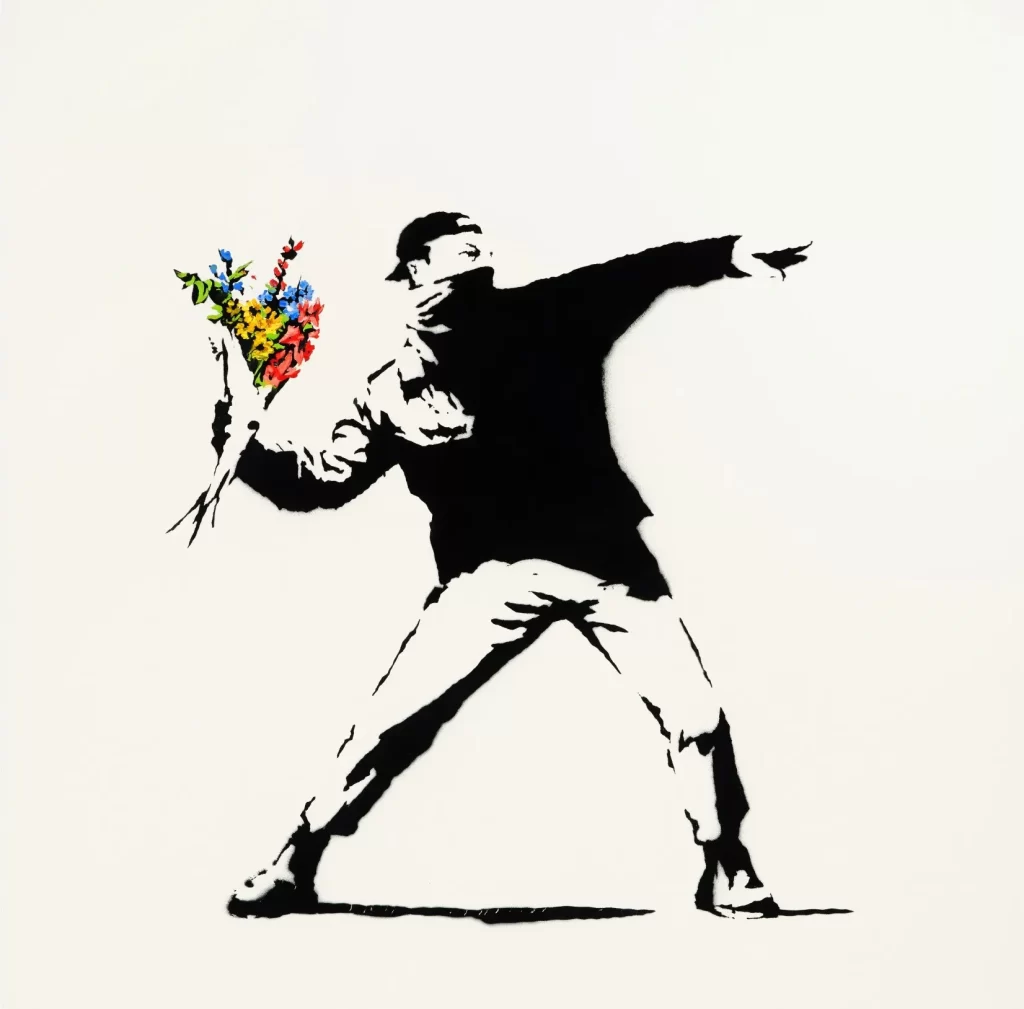
Banksy’s art is not limited by geography or culture; it engages with global issues and addresses shared human concerns. His anonymity also allows him to create a sense of mystery and intrigue that transcends borders. Banksy’s works serve as a reminder that art can be a potent tool for conveying messages that resonate with people from all walks of life, making him a notable European example of art reflecting global perspectives.
“Ai Weiwei Dropping a Han Dynasty Urn”
“Ai Weiwei Dropping a Han Dynasty Urn” by Chinese artist Ai Weiwei, created in 1995, is a provocative and politically charged artwork that challenges conventional notions of cultural heritage and iconoclasm. The piece consists of three black-and-white photographs depicting Ai Weiwei dropping and shattering a valuable Han Dynasty urn. This controversial act is a commentary on the intersection of tradition and modernity in China. It questions the value placed on ancient artefacts versus contemporary expressions, addressing the tension between preserving cultural heritage and embracing societal change. The artwork serves as a powerful global statement on the complexities of cultural identity and the forces of transformation shaping our world.

From Frida Kahlo’s exploration of Mexican heritage to Ai Weiwei’s provocative statements on tradition and modernity in China, these expressions remind us that our identities are both deeply personal and intrinsically linked to the broader cultural landscape. As we continue to explore this captivating theme, we are reminded that in our diversity, we discover the profound unity of our shared human experience.

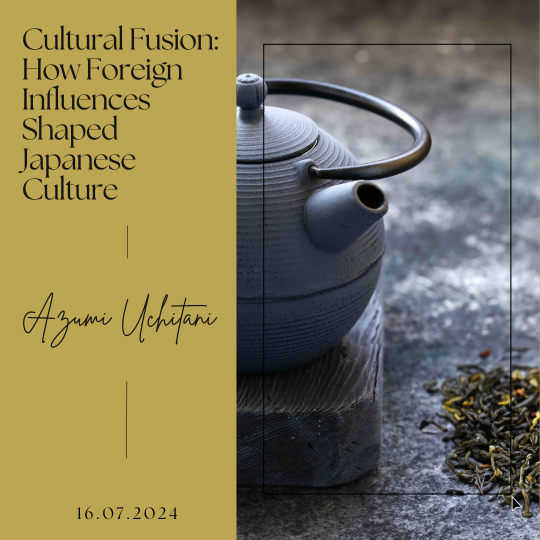
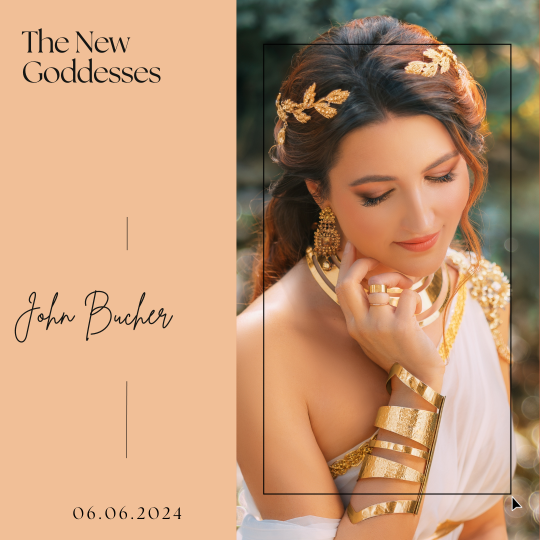
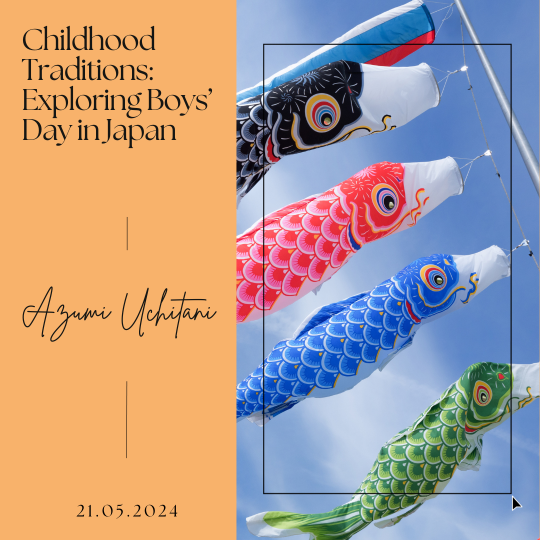

Leave a Reply